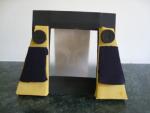Some people swear by tube others solid state some people swear by low watt amps 25 or under other people swear by amps from 40 to 60 watts and some swear by big powerful amps. Tube amps have less components that's good and lower watt solid state amps have less components and so far it seams i like the lower watt solid state amps over the higher watt solid state amps. What do you guys think any truth to this or am i just drinking too much ?






 Reply With Quote
Reply With Quote










